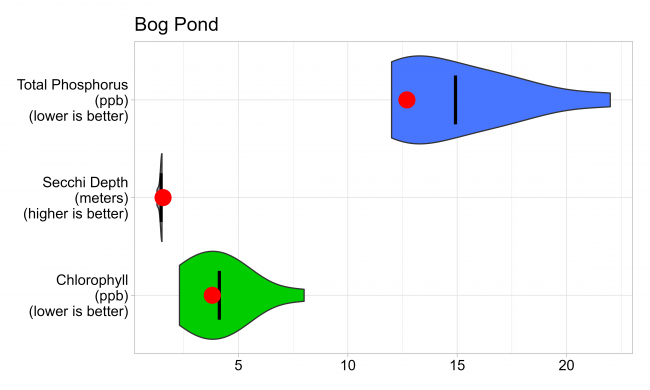Bog Pond is sampled by LEA once per year in August. The long-term average reflects data from 2009 to 2023. The Secchi disk reading for 2023 was 1.6 meters. The Secchi disk did hit the bottom, indicating that Secchi depth is not a reliable indicator of water clarity. The total phosphorus reading of 12.7 ppb falls into the high range. The chlorophyll-a reading of 3.8 ppb falls into the moderate range. Long-term trend analysis indicates chlorophyll-a concentrations in Bog Pond are stable and total phosphorus concentrations are stable. Gloeotrichia echenulata colonies were not observed in Bog Pond in 2023.

Bog Pond’s surface water chlorophyll (ppb), phosphorus (ppb), and Secchi depth (meters) data comparison. Colored areas represent the long-term range of values, from minimum to maximum. Area thickness indicates frequency of measurements at that value. Area thickness increases as more measurements are reported at that value. The vertical black line represents the long-term average value. The large red dot represents 2023’s average value.

Gloeotrichia echinulata (a type of cyanobacteria (blue-green algae) commonly found in low-nutrient waters) can be seen with the naked eye. Gloeo density is reported as a value ranging from 0 – 6, based on the number of Gloeo colonies seen through a Secchi scope. Higher values indicate more Gloeo colonies. Gloeotrichia echenulata colonies were not observed in Bog Pond in 2023.
